- News
- Reviews
- Bikes
- Components
- Bar tape & grips
- Bottom brackets
- Brake & gear cables
- Brake & STI levers
- Brake pads & spares
- Brakes
- Cassettes & freewheels
- Chains
- Chainsets & chainrings
- Derailleurs - front
- Derailleurs - rear
- Forks
- Gear levers & shifters
- Groupsets
- Handlebars & extensions
- Headsets
- Hubs
- Inner tubes
- Pedals
- Quick releases & skewers
- Saddles
- Seatposts
- Stems
- Wheels
- Tyres
- Tubeless valves
- Accessories
- Accessories - misc
- Computer mounts
- Bags
- Bar ends
- Bike bags & cases
- Bottle cages
- Bottles
- Cameras
- Car racks
- Child seats
- Computers
- Glasses
- GPS units
- Helmets
- Lights - front
- Lights - rear
- Lights - sets
- Locks
- Mirrors
- Mudguards
- Racks
- Pumps & CO2 inflators
- Puncture kits
- Reflectives
- Smart watches
- Stands and racks
- Trailers
- Clothing
- Health, fitness and nutrition
- Tools and workshop
- Miscellaneous
- Buyers Guides
- Features
- Forum
- Recommends
- Podcast
TECH NEWS
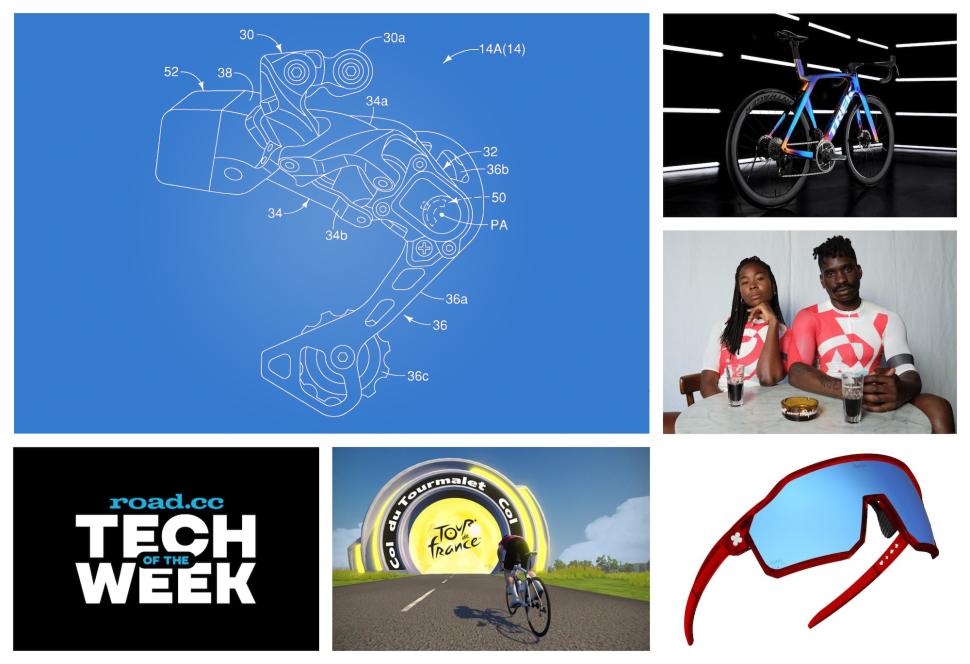 2023 Tech of the Week 1 July 2023 - 1 - edit
2023 Tech of the Week 1 July 2023 - 1 - editIs Shimano planning automatic shifting for the masses? Plus the ChatGPT e-bike (yep, really), Trek, Rapha, Cube + loads more
It has been a mega-busy week in the cycling world with loads of new equipment surrounding the Tour de France, and we’ve seen the first e-bike with ChatGPT integration too, but we’re starting off with suspicions that Shimano is about to go big on automatic shifting…
Is Shimano planning automatic shifting for the masses?
Does Shimano intend to introduce automatic shifting widely on the road and radically alter the way we all ride? New evidence suggests that we’re moving in that direction.
Shimano has been working on automatic shifting – where the bike determines when to change gear, essentially – for many years. The Japanese company disclosed an example of an auto shifting control in a US patent (number 6,073,061) dating way back to 2000 and Shimano’s 12-speed e-mountain bikes already feature Auto Shift.
Auto Shift takes into consideration your cadence, rate of acceleration, the torque that you’re putting through the cranks, how long you’ve been at certain thresholds… It’s pretty complicated stuff. The system assesses all the figures and puts you in the right gear with no need to touch the shifters. You can switch back to manual mode if you prefer. A couple of things make us think that Shimano plans to go further.
At Eurobike, Shimano showed its Q’AUTO project that’s currently in development.
 Our man Tom Weijand explained, “There’s a capacitor in the rear hub that stores a little bit of power derived from the wheel’s rotation, and automatically shifts gears for you.
Our man Tom Weijand explained, “There’s a capacitor in the rear hub that stores a little bit of power derived from the wheel’s rotation, and automatically shifts gears for you.
“An inclinometer can tell if you’re on a gradient and whether you’re heading up or down, and will adjust the shifting parameters to keep cadences higher or lower as required. The magic of this is about bringing battery-less power to a mechanical shifting ecosystem.”
Shimano hasn’t said when Q’AUTO is likely to be released.
 On top of that, a new Shimano patent (US 11,685,470) published this week for a “Bicycle component controller, bicycle component control system and bicycle component control method” – covering both road and mountain bikes – talks more about automatic shifting.
On top of that, a new Shimano patent (US 11,685,470) published this week for a “Bicycle component controller, bicycle component control system and bicycle component control method” – covering both road and mountain bikes – talks more about automatic shifting.
The patent is mainly about how the controller deals with multiple shifts in either direction – the details of that aren’t especially relevant here – and as usual, it’s (really, really) long-winded, but it frequently references automatic shifting.
“The shift commands for the rear derailleur and the front derailleur can be produced manually using the operating device 16 [the shifter] or automatically based on one or more bicycle conditions,” says Shimano
“Here… at least one of the [system’s] data storage devices… is provided with an automatic shifting control program that automatically shifts the rear derailleur and/or front derailleur when an automatic mode is selected.
“In the automatic mode, shifting of each of the rear derailleur and/or front derailleur is preferably at least partially based on at least one of: a cadence, a bicycle running speed, a bicycle tilt, and a gear ratio.”
There are a couple of other really interesting features in this just-released patent.
The part marked 52 on the rear derailleur here is a rechargeable battery.
On this front derailleur, the part marked 54 is also a rechargeable battery. The individual components communicate with one another entirely wirelessly.
None of Shimano’s current Di2 systems uses batteries that are housed on the derailleurs, they all use a central battery that’s connected by wires.
Does that mean Shimano is working on a new completely wireless design, as opposed to the semi-wireless systems we have now? Not necessarily, but it does suggest the brand is open to the possibility.
Second, what the hell is going on here?
This picture shows a cable-operated rear derailleur, but rather than the cable going all the way to a shifter on the handlebar, it’s controlled by a battery-powered ‘actuator’ that’s fixed to the chainstay.
“The actuator is a reversible electric motor unit that pivots a control link to pull and release the cable,” says Shimano.
“The actuator can be controlled by any one of the bicycle component controllers of the other bicycle components to carry out the gear shift.”
In other words, the rider can trigger the actuator to change gear via the shifter or other components can do it automatically, similar to the way described above.
Electronically controlling a cable-operated rear derailleur isn’t entirely new. The NXS wireless shifting system, for example, already does this, although Shimano's system is very different. Shimano is seemingly trying to improve its cross compatibility, for example with CUES, and a system like this could potentially be used with something like the mechanical version of 105 R7100 that we know is on the way.
Incidentally, although this patent shows a cassette with nine sprockets, Shimano makes it clear that “more than 11” sprockets can be included.
Could we see Shimano bring automatic shifting to its road-going groupsets, then? It’s certainly a possibility. Is it a good idea? Let us know what you think in the comments.
Introducing the world’s first e-bike with ChatGPT integration. Yes, really
We’ve all heard loads about the ChatGPT artificial intelligence chatbot over the past few months and now Urtopia has integrated it into an e-bike for the first time. You communicate with ChatGPT via Urtopia’s voice recognition feature. In other words, you can now chat with your bike – you know, like David Hasselhoff used to chat with his car in Knight Rider. Kind of.
“With the power of ChatGPT and Urtopia’s voice recognition feature, the Urtopia smart e-bike becomes an exceptional companion for riders, delivering real-time assistance based on users’ needs,” says Urtopia.
Behold, the video…
That ChatGPT fella goes on a bit, doesn’t he?
You could ask ChatGPT to tell you the best place to ride your bike in Birmingham, how to fix a puncture… or pretty much anything else you can think of. Mercedes recently announced that it is adding ChatGPT to cars but Urtopia is the first in the bicycle world.
Urtopia e-bikes also feature proprietary technology related to GPS navigation, riding safety and data recording, along with anti-theft measures. They are connected with popular platforms like Apple Health and Strava too.
Urtopia e-bikes start at €2,299.99, which converts to £1,980.
What do you think: a useful innovation or tech for tech’s sake?
Are Lidl-Trek’s new bikes the coolest in the Tour de France?
Wow! There are some amazing-looking bikes in this year’s Tour de France but Lidl-Trek’s new paint jobs take some beating. The team that changed its name from Trek-Segafredo earlier this week is showcasing Trek’s new Project One paint schemes – Project One being the US brand’s custom programme.
“Each scheme is handcrafted using individualised paint processes, creating organic designs and patterns that cannot be replicated,” says Trek. “No two Project One Icon frames are the same.”
That said, you can get your own version on a Trek Émonda SLR or Madone SLR by going through Project One.
The pick of the bunch has to be the Chroma Ultra-Iridescent finish, as modelled by Mads Medersen’s Trek Madone SLR.
How much?
There’s always a catch, isn’t there? The paint job alone will set you back £3,850. Ouch!
They’re not all quite that price. The Team Tie Dye (above) and Real Smoke Cerulean Mist (below) finishes, for example, are £1,650 apiece.
Okay, not too many of us are going to spend this amount on a paint job but it’s fun to gawp in at the shop window occasionally, isn’t it?
Zwift’s new Climb Portals allow you to tackle legendary Tour cols
Online cycling app Zwift has introduced two new Climb Portals that are designed to mimic real-world climbs – legendary Tour de France cols to begin with.
Zwift says, “Climb Portal allows the Zwift community to come together and ascend imaginative versions of real-world cols, summits, gaps, and passes in a brand new Zwift experience. The new Climb Portal recreates the Col du Tourmalet, and other legendary Tour climbs.
“Inside the portals, cyclists will see a road surface that floats in a vast, colourful expanse. Cyclists will be able to see the challenge ahead, illustrated by a colourful ribbon climbing into the distance, changing colour to mimic the gradient variations of the climb. The pitch and direction of the climbs perfectly match their real-world inspirations, giving Zwifters the realistic challenge of these climbs, as well as a completely new visual experience.”
Climbs used in the Tour de France and Tour de France Femmes Avec Zwift will feature during July. Other famous climbs will be replicated in future with updates every two weeks.
Rapha introduces collab with St Raphaël
Rapha has introduced a collaboration with French apéritif brand St Raphaël. St Raphaël sponsored a pro cycling team in the 1950s and 1960s, Jacques Anquetil and Tom Simpson being among its most famous riders.
Alongside the main Saint Raphaël team, there was a feeder squad called Rapha-Géminiani – and the British bike clothing has since borrowed part of the name.
The range includes a Quarter Zip Knit Jersey (£150) in red, white, or black, Pro Team Aero Jerseys for men and women (£175), along with socks (£18), a cap (£32), and a bidon, otherwise known as a water bottle (£16).
Cube reduces drag of Aerium C:68X triathlon bike
Cube has launched a new Aerium C:68X triathlon bike in time for the Challenge Roth long-distance event on 7th July.
Cube says that the bike incorporates additional storage and hydration options, as well as disc brake integration, without compromising the bike’s aero performance.
“In fact, the engineers not only preserved but actually improved on the already impressive numbers of the outgoing model: the brand-new Aerium C:68X is 3.63 watts faster than the Aerium C:68.”
That claim doesn't meaning a whole lot without a speed at which it's relevant. We've asked Cube to fill us in. The brand also says the weight has been reduced to 9.1kg for the full bike without the hydration system.
The designers have carried over some key elements from the old model including the Twin Head Tube – look at the pics and you’ll see why it’s called that – which is designed to keep the bike stable in crosswinds, and the low seatstays which reduce the frontal area.
“The fork and cockpit have been aerodynamically optimised and we integrated the disc brake mounts,” said Bernd Schenkl, Cube’s Head of Engineering. “There's a hydration system with a bladder located directly above the bottom bracket, which we developed and tested in conjunction with our triathletes.”
The new Aerium C:68X comes in two different models. The Aerium C:68X SLT has a Shimano Dura-Ace Di2 groupset and Newman Advanced SL R.80 Streem wheels, and is priced at £8,999.
The Aerium C:68X SLT comes with a SRAM Force AXS groupset and Newmen Advanced SL R.65/R.80 Streem wheels, and it’s priced £7,899.
A frameset, including Cube’s cockpit, is £3,999.
SunGod releases Tom Pidcock Signature Series glasses ahead of the Tour
After launching Ineos Grenadiers Team Edition eyewear and Geraint Thomas Signature Series specs over the past few weeks, SunGod has introduced a Tom Pidcock version of its Velans in time for the Tour de France. The British brand is really making its sponsorship deal work hard.
The limited edition Tom Pidcock Velans glasses come in a vibrant red with a silver/blue lens that’s engraved with a playing cards motif. They’re priced at £150.
Selle Italia announces Tour de France saddles
Selle Italia has introduced Tour de France versions of two of its existing saddles: the Novus Boost Evo and X3 Boost. They feature logos and a splash of yellow detail.
> Read our review of the Selle Italia Novus Boost Evo Kit Carbonio Superflow saddle
The Selle Italia Novus Boost Evo is a wave shape and the Tour Edition comes with manganese rails. It is priced at £94.99.
> Check out the best road bike saddles 2023
The X3 Boost saddle has a Superflow cut-out that’s designed to relieve pressure on the perineal area. It has rails made from FeC Alloy (a form of steel that Selle Italia uses) and is priced at £49.99.
Howies debuts merino-blend bike clothing range
Howies has introduced a new range of bike clothing for the summer that features an innovative Polytechknit fabric designed to keep you comfortable in the saddle.
“The Polytechknit fabric brings together the best of both natural and synthetic fibres with its complex knit of a polyester mesh on the inside face and soft merino wool on the outer,” says Howies. “By combining the nonabsorbent properties of polyester and the natural breathability, temperature regulation and moisture-wicking properties of merino wool, the fabric offers enhanced performance and comfort for cyclists.”
The range features the Thomas long-sleeve jersey (£79), Doull short-sleeve jersey (£69), Linton bib shorts (£75), and Elias base layer (£45). There are also two different sock designs (£25).
Howies says that the polyester sits against your skin and perspiration is pulled through the mesh by the merino wool on the outside. The merino element is also designed to regulate body temperature and reduce odour while the poly mesh adds durability.
Howies’ new bike clothing range is available from today (1st July 2023).
We have some on the way for review here on road.cc.
Torq introduces flavourless energy gel
You might recognise the feeling: you’re in a race or on a long ride and badly need some extra energy… but you just can’t stomach any more sweetness.
With that in mind, Torq has released an energy gel that’s entirely flavourless. The nutrition brand says that its new Energy Gel Naked is “ideal for longer endurance sessions and events when fuel consumption is high and you want more variation” and can act “as a great way to cleanse your palate”.
Each gel contains 30g (120 kcal) of maltodextrin and fructose in a 2:1 mix. No electrolytes are included because they’d add flavour. A box of 15 is priced at £29.25.
Is this the most subtle phone mount ever?
Few editions of Tech of the Week pass without a clever and/or wacky invention from Kickstarter, and today’s entry is this, the Loop Micro Mount. What the Dickens is the Loop Micro Mount? It’s a phone holder for your bike that when not in use does a pretty good impression of a standard headset top cap.
Rather than gibber on, it’s probably easiest if you just watch the vid…
> Check out our story on a previous Loop Mount
It has already smashed its funding target. To be in line for one, you need to pledge at least £32. Shipping is expected in September.
Ergon produces its first fully recyclable saddle
Ergon says that it has made a saddle that’s fully recyclable, the first product in its GreenLab Circular initiative that aims to bring more sustainable products to market. All components can be returned to the material cycle at the end of the SR Allroad Core Circular saddle’s service life.
“Our goal was to construct a saddle that comes entirely from a family of similarly-engineered materials because only then is there the capability of completely recycling a product in its entirety,” says Ergon’s Andreas Krause.
All of the plastic parts are BASF polyurethanes so they can be recycled in one piece. The rails are made of stainless steel and can be removed by hand. Ergon produced the saddle without colour pigments or a surface coating.
The SR Allroad Core Circular saddle is a proof of concept rather than a product that’s on the market. Ergon hasn’t announced a launch date.
In case you missed it earlier in the week…
- Running 1x? Wolf Tooth introduces LoneWolf Aero chainguide to avoid a dropped chain
- Shimano 105 12-speed mechanical groupset breaks cover
- Insta360 launches GO 3 thumb-sized action camera for cycling with magnetic mounting system
- 10 tech highlights from Eurobike 2023
- MiRider announces new 24” wheeled bike, upgrades to GB3 model and derailleur-free gears with a belt drive via G3ARED
- Doing e-bikes differently: meet Velo De Ville
Mat has been in cycling media since 1996, on titles including BikeRadar, Total Bike, Total Mountain Bike, What Mountain Bike and Mountain Biking UK, and he has been editor of 220 Triathlon and Cycling Plus. Mat has been road.cc technical editor for over a decade, testing bikes, fettling the latest kit, and trying out the most up-to-the-minute clothing. He has won his category in Ironman UK 70.3 and finished on the podium in both marathons he has run. Mat is a Cambridge graduate who did a post-grad in magazine journalism, and he is a winner of the Cycling Media Award for Specialist Online Writer. Now over 50, he's riding road and gravel bikes most days for fun and fitness rather than training for competitions.
Latest Comments
- Hirsute 1 sec ago
Where I am they had a number of issues of people queuing in the roads for the tip and disrupting traffic. The police had to intervene a couple of...
- Rendel Harris 4 min 30 sec ago
That's only for longer journeys; obviously for short trips he employs the sedan chair.
- Rendel Harris 5 min 35 sec ago
No particular sympathy for MVDP, he knew the rules and chose to break them and so gets the punishment. However, isn't it time that we did away with...
- chrisonabike 19 min 21 sec ago
Surely that will only encourage the drivers to speed up as soon as they see the lights change?...
- Tony W. 44 min 48 sec ago
In accordance with the highway code ? bus driver was breaking the speed limit, overtaking a child on a bicycle, he should've as far right as...
- polainm 1 hour 1 min ago
One is permantly in misery mode, the other all blacked out in stealth mode.
- mark1a 1 hour 19 min ago
...and go and ride your bike for two hours or less.
- polainm 1 hour 35 min ago
Just put in planning permission for a NASA sized warehouse the area of ten football pitches, right up against local housing. That'll go through no...
- Rome73 2 hours 30 min ago
It reminds me of the joke that used to do the rounds when I was younger;...
- David9694 4 hours 37 min ago
Down my way, a 200 yard bus gate or 20 mph limit extinguishes all economic and domestic life, so I assume Paris centre-ville has been rendered a...
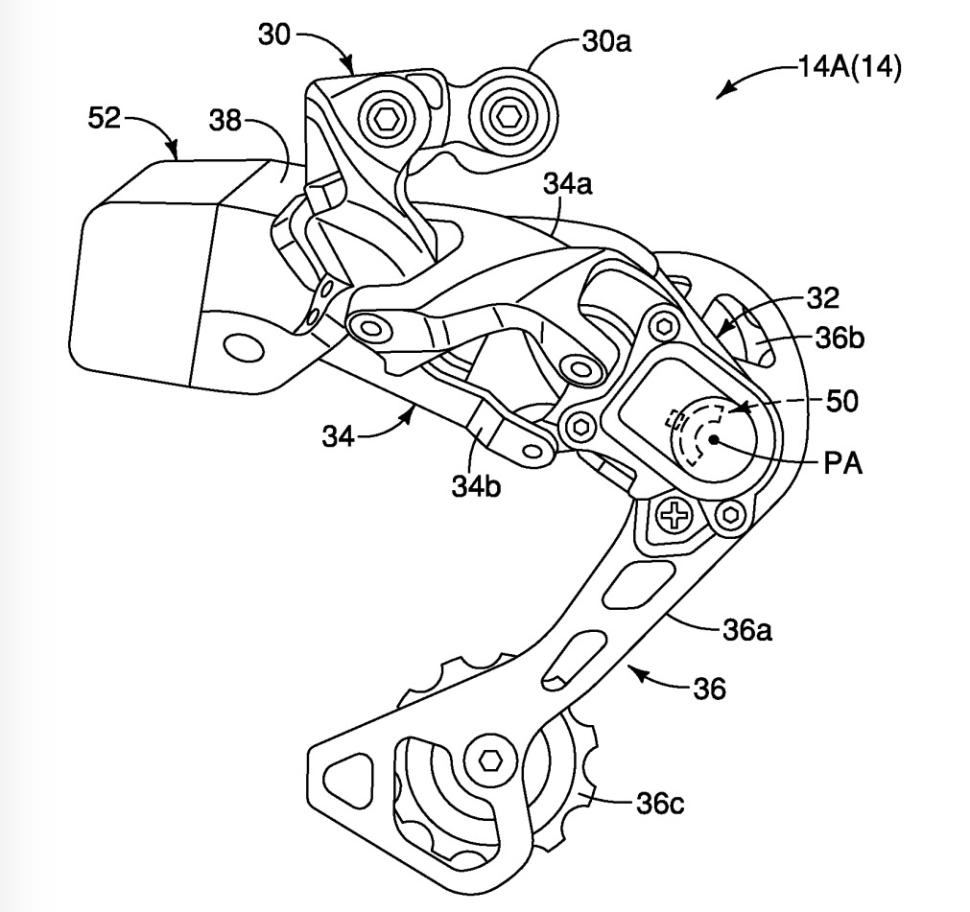
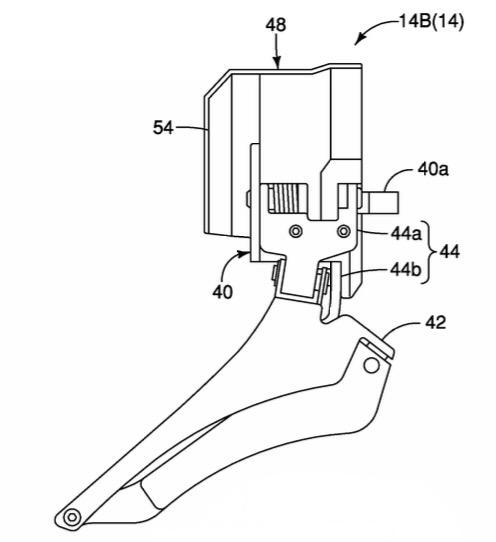
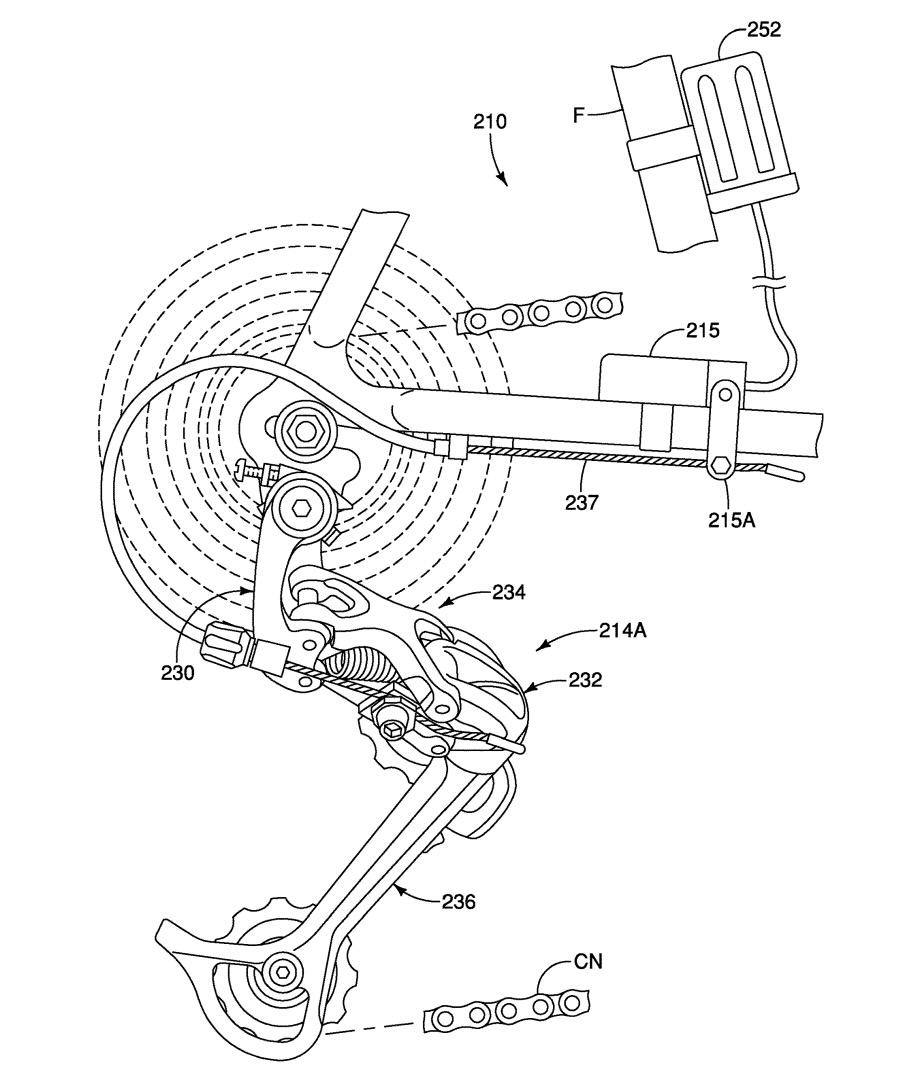


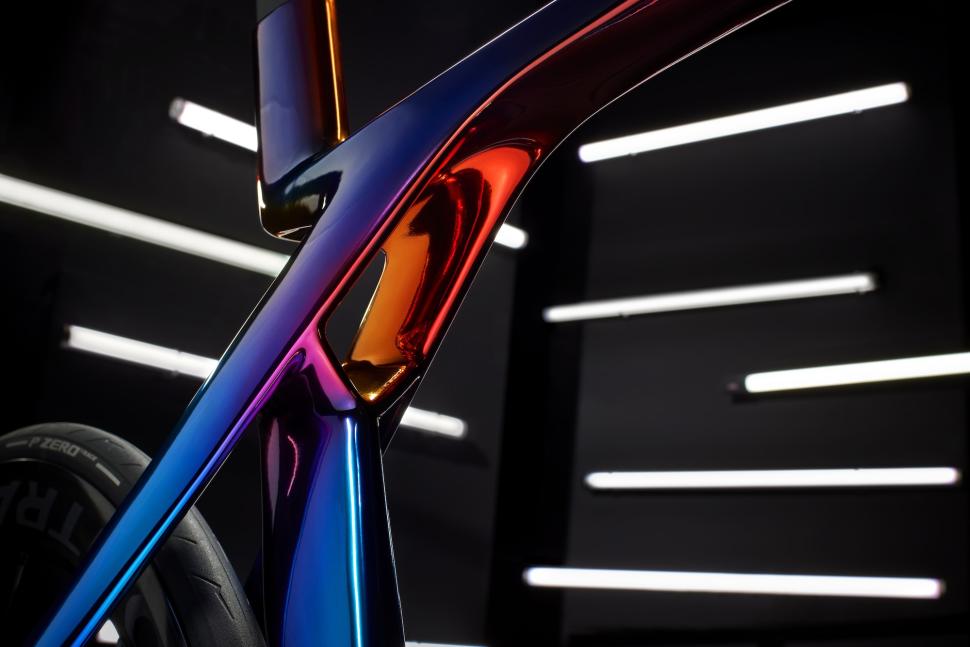
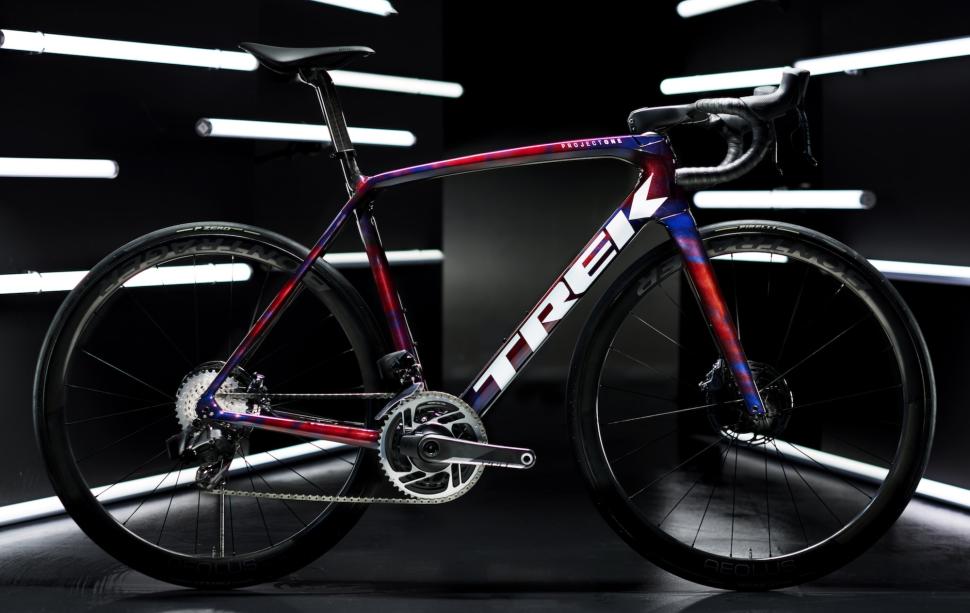
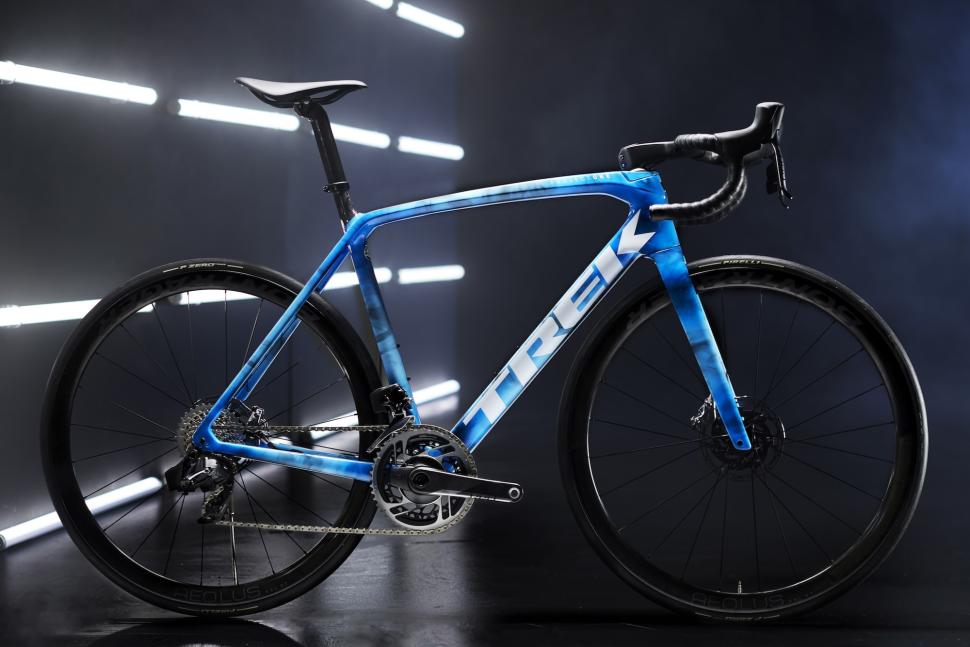
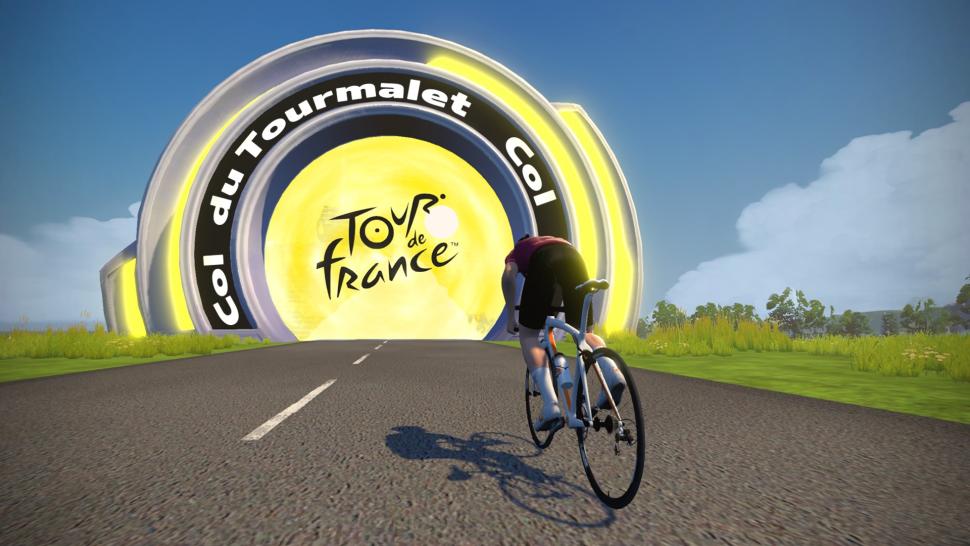
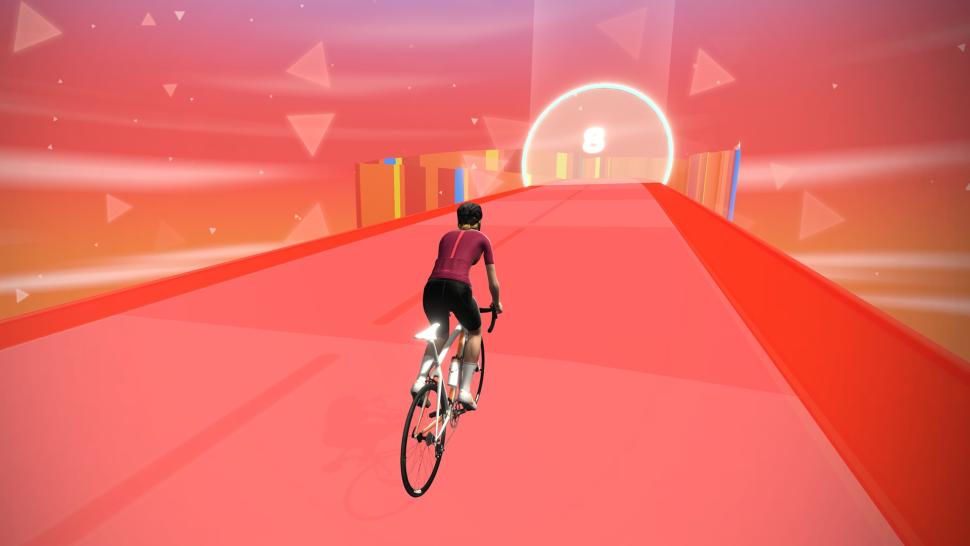
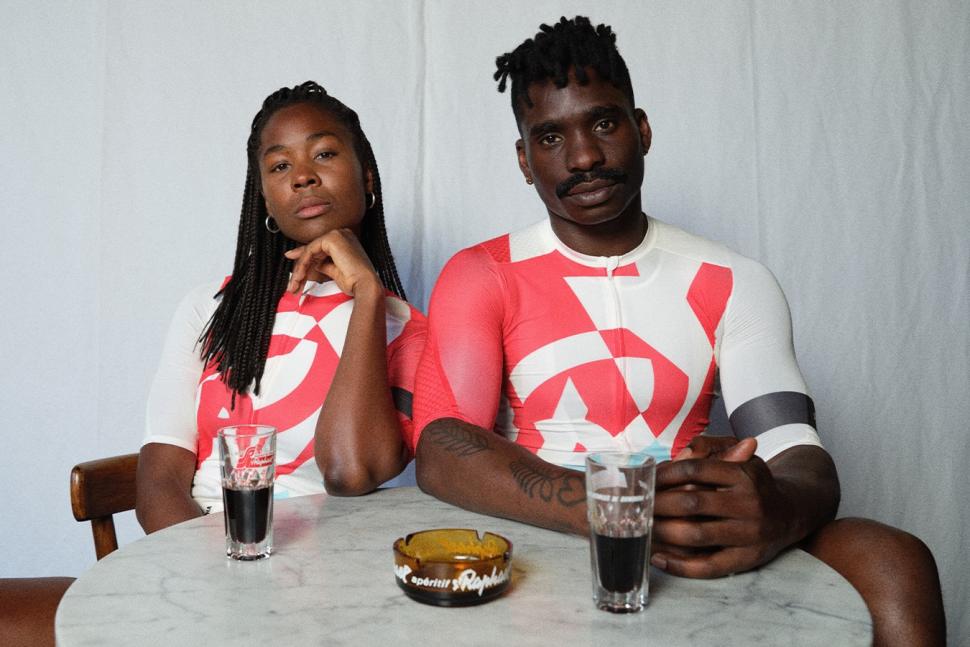
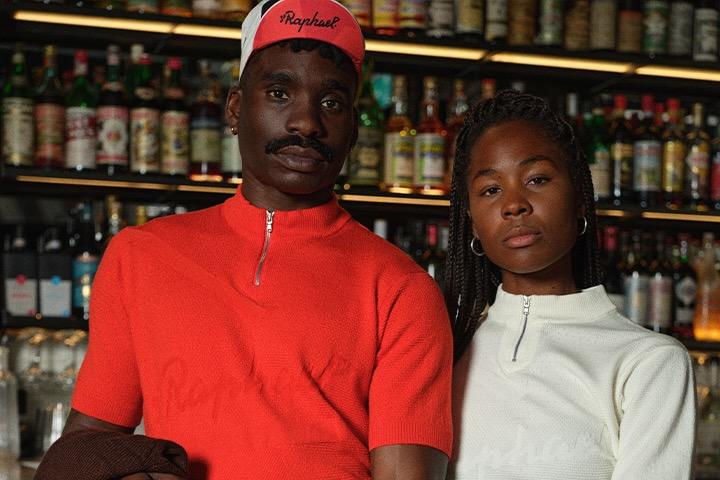

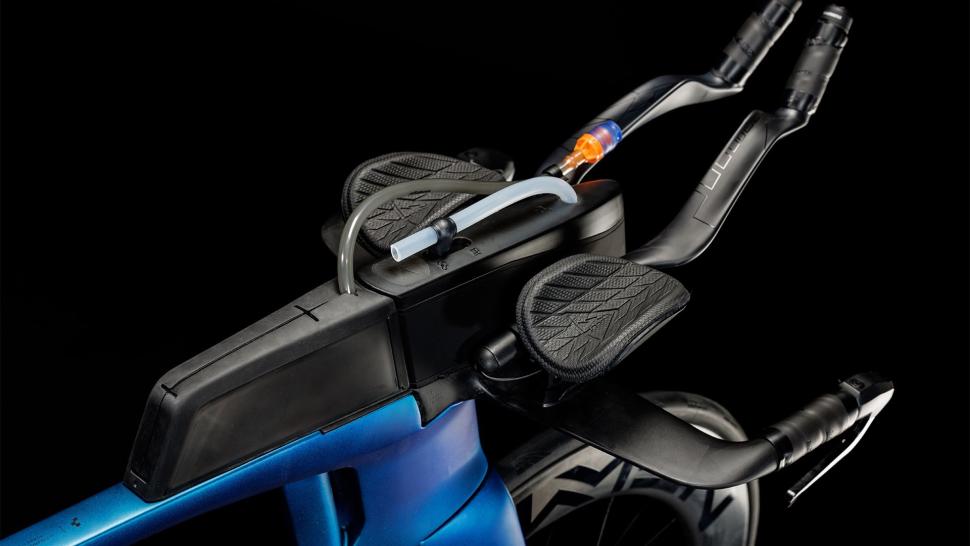
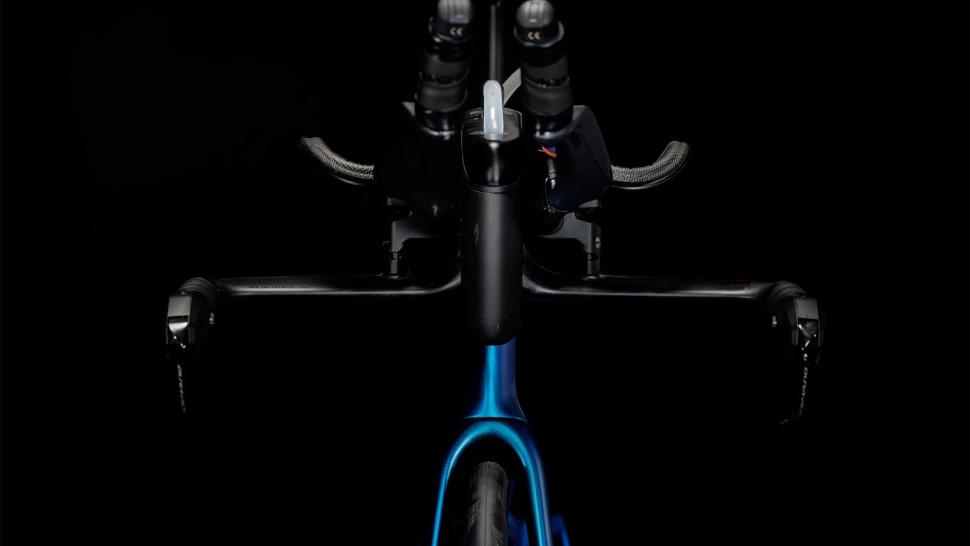
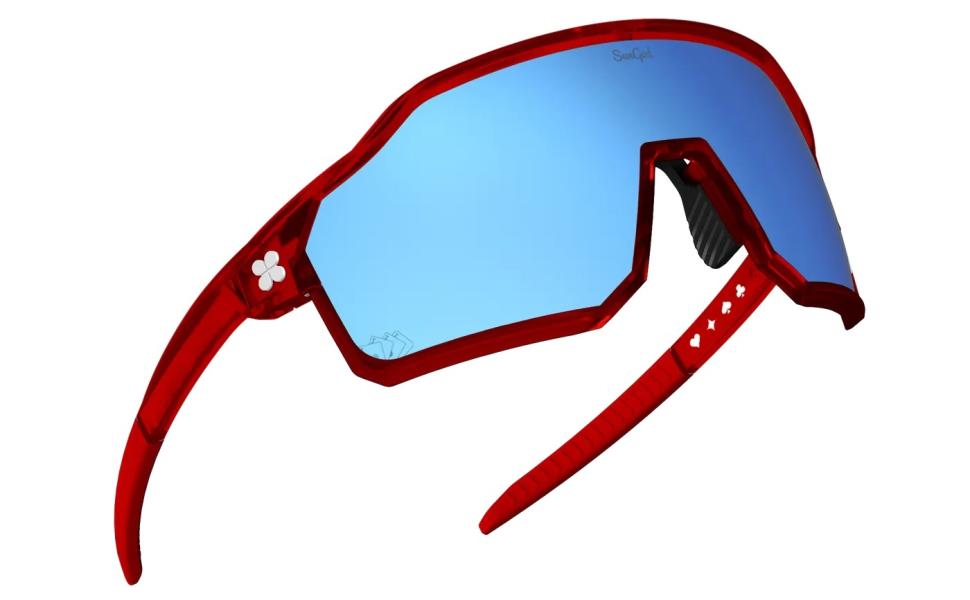



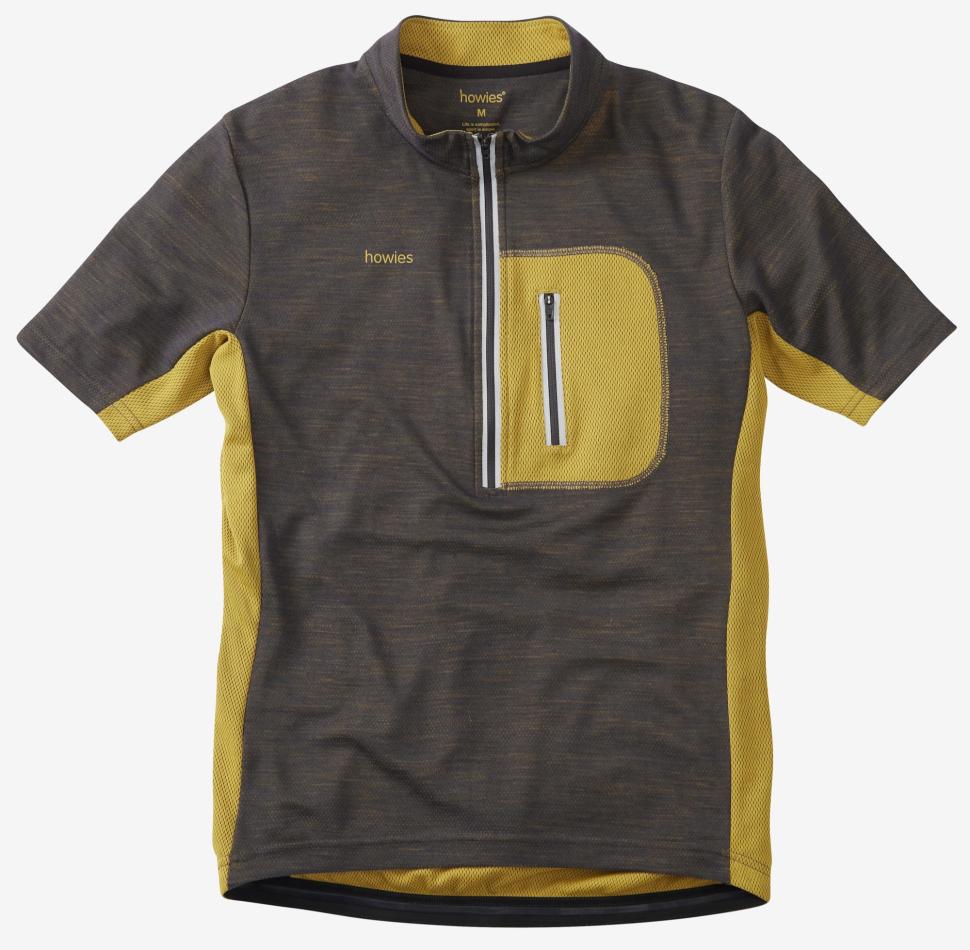
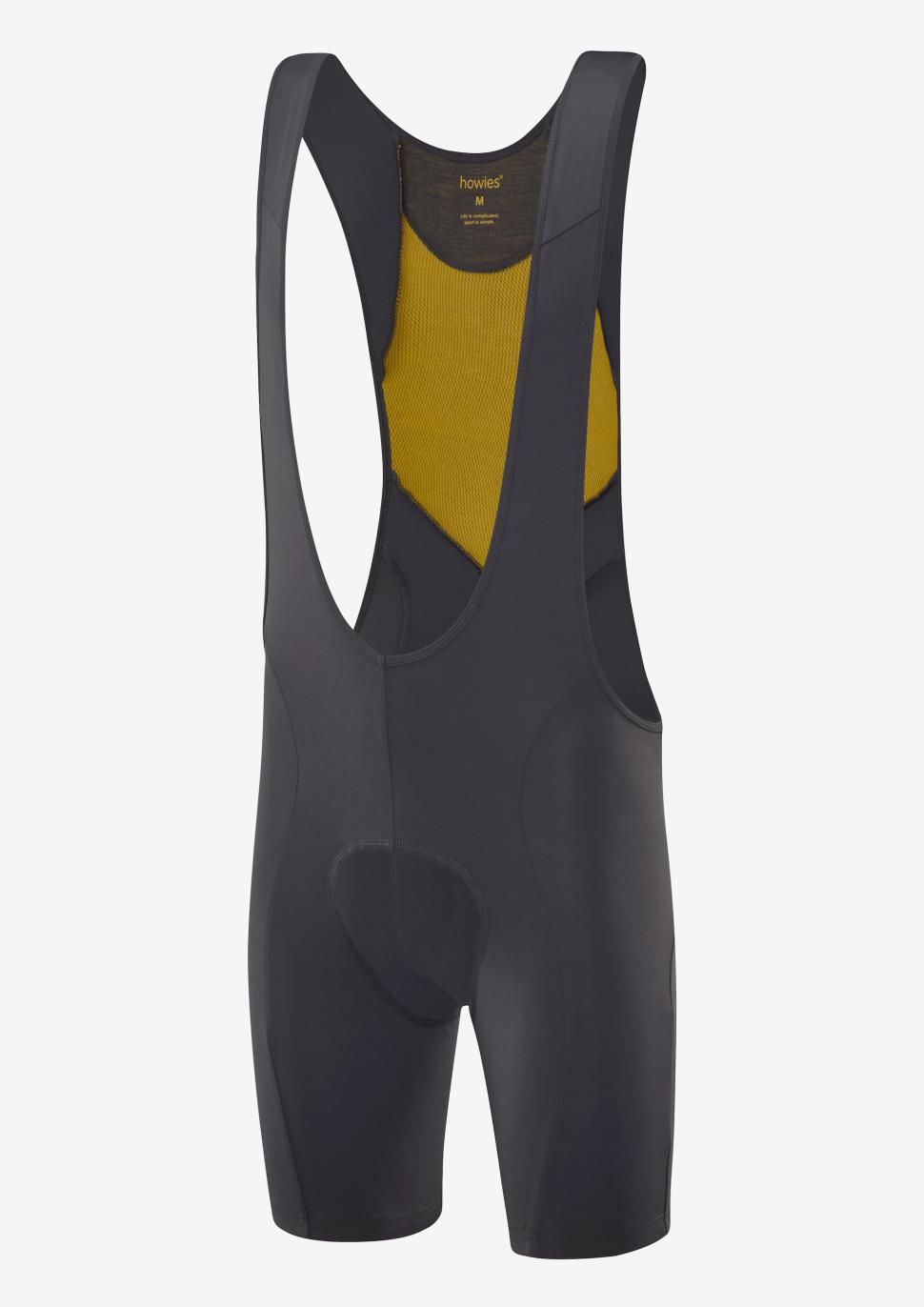
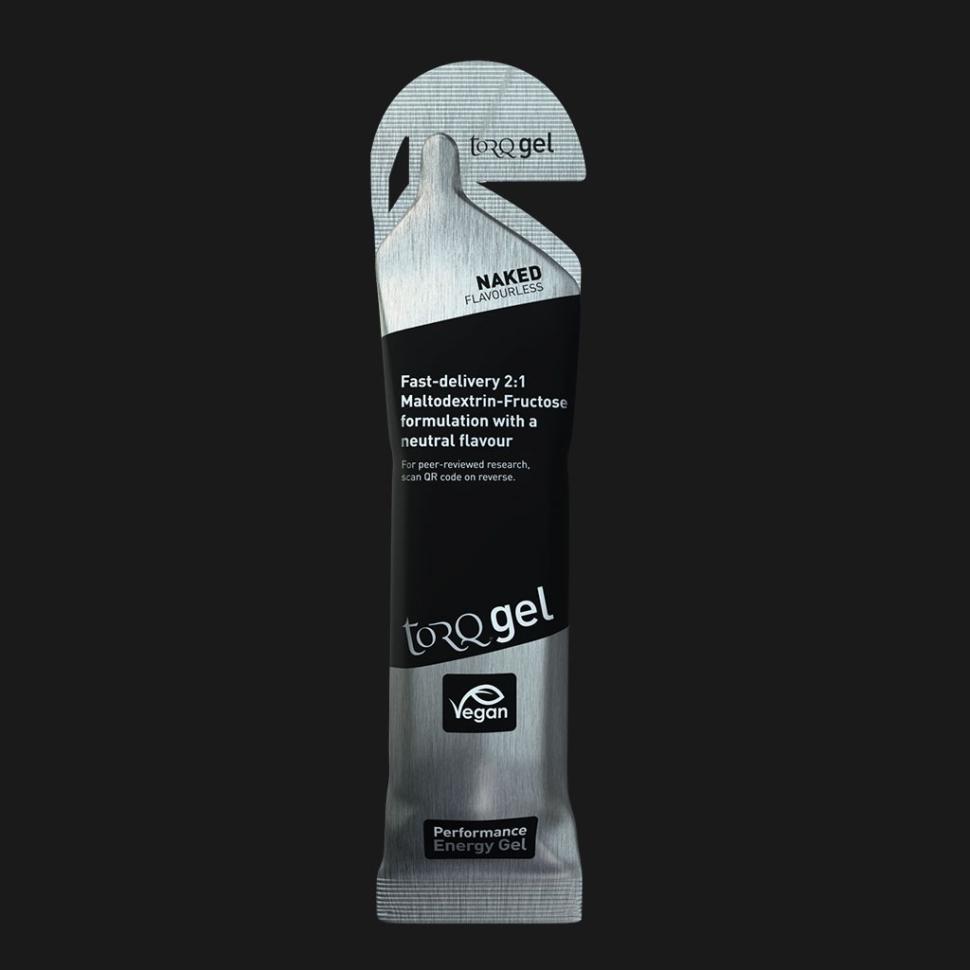
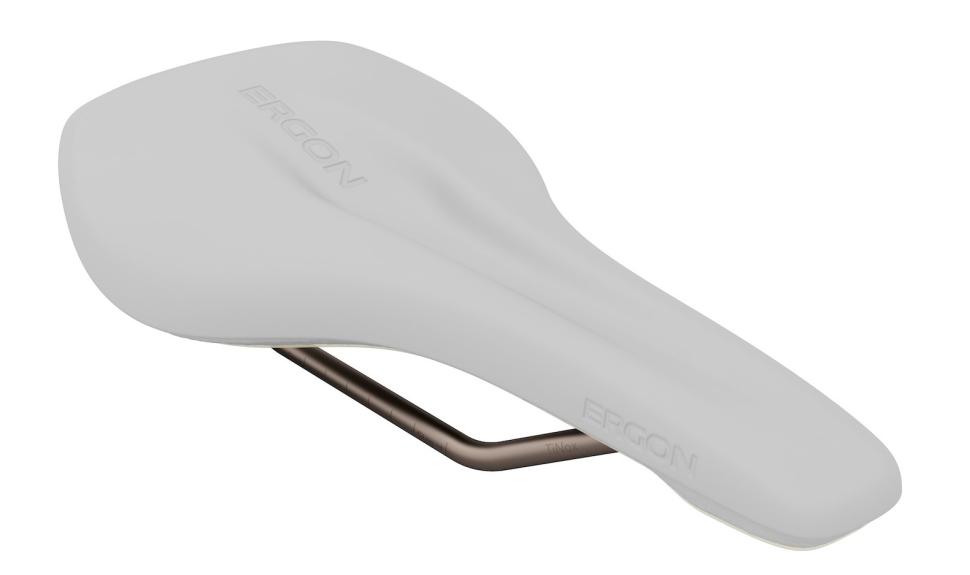
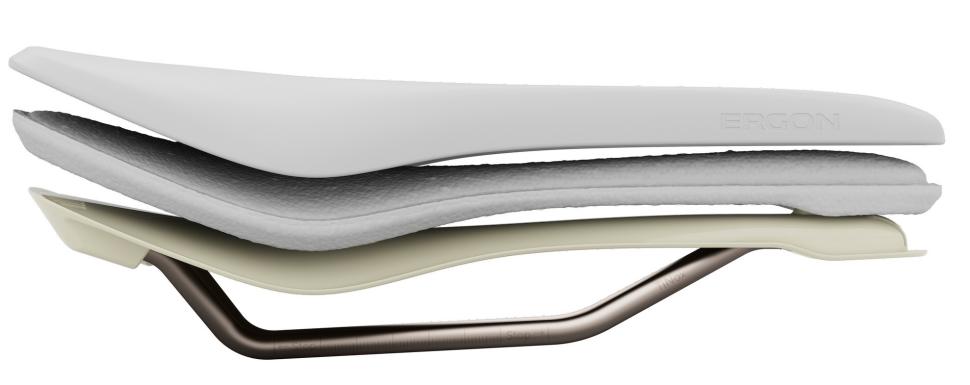
Add new comment
15 comments
Didn't I say the other week that Shimano was probably looking at an auto hub gear with that new connector thingummy? I see a purpose, but definitely not for me.
.
Auto shifting? Nah, just more stuff to go wrong. We are going further and further away from what a bike is: A reliable cheap form of transport which can be fairly easily fixed at home or on the road. What if you are on a lumpy ride and the bike decides to stick in the hardest gear? We see it time and time again on the pros bikes where they have to change bikes due to a fault with the electronic gears.
Is auto-shifting a good idea - I would say yes, given the number of riders who have no clue how gears work.
Obviously of little interest to experienced riders, but the reality is that there are plenty of people around who have no idea how easy being in the right gear all the time makes riding. I see people panic changing too early on hills and super-spinning - losing all their momentum while using all their energy, then there are those who insist on grinding away.
The interesting thing for me is how the system copes with coasting to a stop on a derailleur. I can see that it can detect it, but how does it get you to pedal to make the changes?
I'll find out what auto-shifting is like in a week or two - I have a commuter ebike on the way to replace taking the van to the office on the days when I need to go there. I wanted something fairly maintenance free, so it has Gates carbon drive and Enviolo AutomatiQ hub gear. A benefit of hub gear over derailleur I guess is that it can shift when the pedals aren't moving. I'm perfectly comfortable choosing and changing gear myself, but this is in essence a purely utility bike so just want to turn the pedals and go. From what I can see, one just sets the cadence level and the continuously variable hub adjusts to suit. Assist level can be manually set or dynamically adjusted from heart rate.
I think auto-shift may be overkill for most people - if there's only one shifter everyone I've encountered can get the hang of that.
Went to hub gear and belt last year (trigger shifter, Shimano Alfine 8) for my general use bike. The ability to shift while pedals are not moving turned out to be something I really like. Great for traffic lights!
Good heavens, so it determines from your heart rate when you're working too hard and slips down the gearbox automatically? I generally agree with the other comments about over complicating bikes but if it could be scaled down to race bike size I can see that being an incredible aid for climbing.
Not the shifting, based on HR - the gear selection is based on a cadence that you set. It's the assist level that can optionally be set to respond tto HR. This feature is also available on a 12kg road ebike (Specialized Creo SL) either via the Spesh Mission Control app or the 3rd party BLevo app. The bike I have just ordered is the Vado 5.0 IGH, it's a huge departure from the rest of my fleet, but hopefullly the ideal solution to a hilly commute.
Ah right. I'm guessing it wouldn't take much to create a heartrate-based gear change though, given the tech you describe as already in place. Or indeed another thing I've long thought would be good, a bike equivalent of a trainer's ERG mode, so one could set the desired wattage and the system would adjust to the right gear to keep you there.
Hate to say it, but I agree about the "no clue" comment. My mechanical sensitivities are regularly assaulted by the sound of the other half grinding through the gears as they belatedly notice they have impinged upon an upward gradient, or just figured out that, having stopped, they now need to restart from rest. I've given over mentioning it!
Mind you, unless this system can anticipate the situation, and moreover momentarily ease off the power, then it won't do much better. I understand Mercedes trucks use their satnav to inform the gear selection in anticipation of hills.
There are plenty of experienced cyclists who do not use gears correctly - that is not deliberately varying cadence for some system they work to but simply seem happy to strain or spin rather than maintain a steady cadence by using the gears. Riders of a certain age, used to massive race gearing I can forgive, but 30 something's straining away from junctions I hate to see.
I'm surprised the manufacturers haven't been offering an autoshift option for years. All the basic tech has been in place for a long time.
The Rapha quarter zip knit is designed for wearing off the bike, shame.
Damn fine paint job on that Trek.
I wish more bike manufacturers would go a bit crazy for the tour and show off some more exciting colour schemes. You'd think it's there biggest shop window possible and so many of them end up with a pretty much plain black bike.
Mads was on his shiny Trek yesterday, good shots of it.